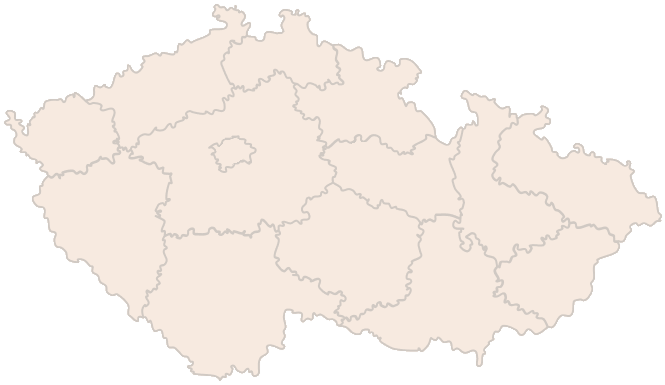The new electronic document is not an eCitizen
A basic observation that may have confused those who tried to download and use the new electronic document in January was that it is not an eObčanka application . This confused many people and also led to some reactions that the system was complicated and not functional.
However, only the names are confusing. Under the name eObčanka, you can download an old application from 2018, which, according to its description, is used for electronic identification and authentication of holders of ID cards issued after 1 July 2018 against online services and portals provided by the public administration. However, in order for it to function properly, a computer or mobile device must be connected to an ID card reader. This complicates the whole operation somewhat. However, it is a major step in the field of digitisation and identification of citizens, enabling convenient and secure identity verification across public administration services.
A new type of ID card containing a chip is also commonly referred to as an eCitizen. This can be used to identify yourself using a smart card reader embedded in your computer or purchased from an electrical shop.
This type of ID card is now issued by the authorities instead of the original plastic cards. When handing them over, they provide citizens with the IOK and DOK codes.
Tip for article
Tip: If the authorities equip you with an original plastic eCard with a chip, you will also receive (or choose) two personal IOK and DOK codes.
Thepersonal identification code (IOK) is like a PIN for your eID card. The IOK has 4 to 10 numbers. It will come in handy when you log in to the Citizen Portal or other connected portals. Beware, you can only get it wrong three times, then you have to use the deblocking personal code. You can find detailed information on the Citizen Identity infoweb.
The Deblocking Personal Code (DPC) will come in handy if you forget or enter your personal identification code incorrectly three times. The DOK has 4 to 10 numbers and works similarly to the PUK on your phone SIM card. You can find detailed information on the Citizen Identity infoweb.
Are you solving a similar problem?
Looking for an answer to a specific legal question?
Email us and you will have a response from one of our attorneys within 48 hours.
I want to consult
- When you order, you know what you will get and how much it will cost.
- We handle everything online or in person at one of our 6 offices.
- We handle 8 out of 10 requests within 2 working days.
- We have specialists for every field of law.
What documents and papers do you need to take to obtain an eID?
- If this is the first ID card, a birth certificate or passport is required. In justified cases, a citizenship certificate may also be required.
- If you are applying for a new ID card because it is about to expire, bring your existing ID card with your application.
- If your ID card is lost or stolen, provide your passport, driving licence or birth certificate as proof of identity.
- You do not need a photograph, it will be taken on the spot.
The standard time for issuing an eID is 30 days, but it is usually ready for collection sooner. The fastest time for issuing an eID is within 24 hours on working days, with collection of the document at a Ministry of the Interior office. eID can also be issued within 5 working days and can be collected at a Ministry of the Interior office or at the office where you applied for your ID card.
How much will I pay for an eID card?
If your existing ID card expires in less than 6 months, you can apply for a free replacement eID card.
If you need help with unblocking your IOK and DOK from the municipality, you will pay CZK 100 for assistance.
What is the difference between a chip ID card and an eID card?
On the ID card with chip, which was issued until 30 June 2018, you could only upload qualified certificates for electronic signature and authentication certificates. In contrast, the eObčanka is now also able to verify your identity on connected public administration portals when you want to do something online. If you have an original ID card with a chip and would like to exchange it for an eObčanka, you can apply for a free exchange.
What are eDocuments good for?
But let’s get back to the brand new app, eDocuments. This app has been running since January 2024 and uses one of the existing bank-type identities for primary identification. One of the most convenient ways to authenticate yourself in the eDocuments app is with a bank identity, which many people already use to communicate with the authorities. Logging in with a bank identity is fast, secure and user-friendly – there is no need to install anything or buy additional devices. The app will then link your identity to your ID and de facto download it to your mobile.
What does the eDocuments app entitle us to?
The app allows people to prove their identity via their mobile phone. There are several options for proving your identity – from revealing your full identity including name, birth, residence or marital status to more economical options where, for example, a young-looking lady can prove she is already eighteen after ordering an alcoholic cocktail in a bar. However, what her name is and where she lives does not have to be revealed to the bartender.
The digital ID also allows data to be copied into various forms, be it online shopping or booking flights.
Tip for article
Tip: Many of us still remember to carry our ID card at all times and never go out without it. However, this has not been the case for many years and no one should be penalised for not producing their ID. On what occasion and to whom do I need to prove my identity and how can I do so? Find out in our next article.
Since when has the app been fully functional?
Since January 2024, electronic documents have been accepted by central state administration bodies, e.g. ministries, the Czech Telecommunications Office, the Czech Statistical Office or the National Office for Cyber and Information Security. We tried it out at the Ministry of Labour and Social Affairs and everything worked without any problems. During 2025, the number of institutions accepting the application is being expanded and the integration of other digital documents (e.g. driving licences) is underway.
Summary
Since 2024, citizens have been able to prove their identity not only with a classic ID card with a chip (the so-called eObčanka) but also with the eDoklady mobile application, which has been fully operational since 1 January 2024. While the eObčanka requires a reader and knowledge of the personal IOK and DOK codes, the eDoklady application uses, for example, a bank identity to log in and allows convenient digital verification of identity without the need for a physical document. The application is accepted by central government authorities and its use is gradually expanding to other areas. The difference between the two methods lies primarily in the technical solution and the level of convenience – thus, an electronic identity on a mobile phone can be more practical than a plastic card in many situations.
Tip for article
Hint: At 15 we can’t wait to see it, but then the enthusiasm wanes and it is purely a duty. We’re talking about the ID card. We don’t necessarily have to carry it, but we definitely have to have it. In our next article, we look at what an ID card is actually good for, how and where to get one and how much to pay for one. In addition, we also give you advice on what to do if it is lost or stolen.




